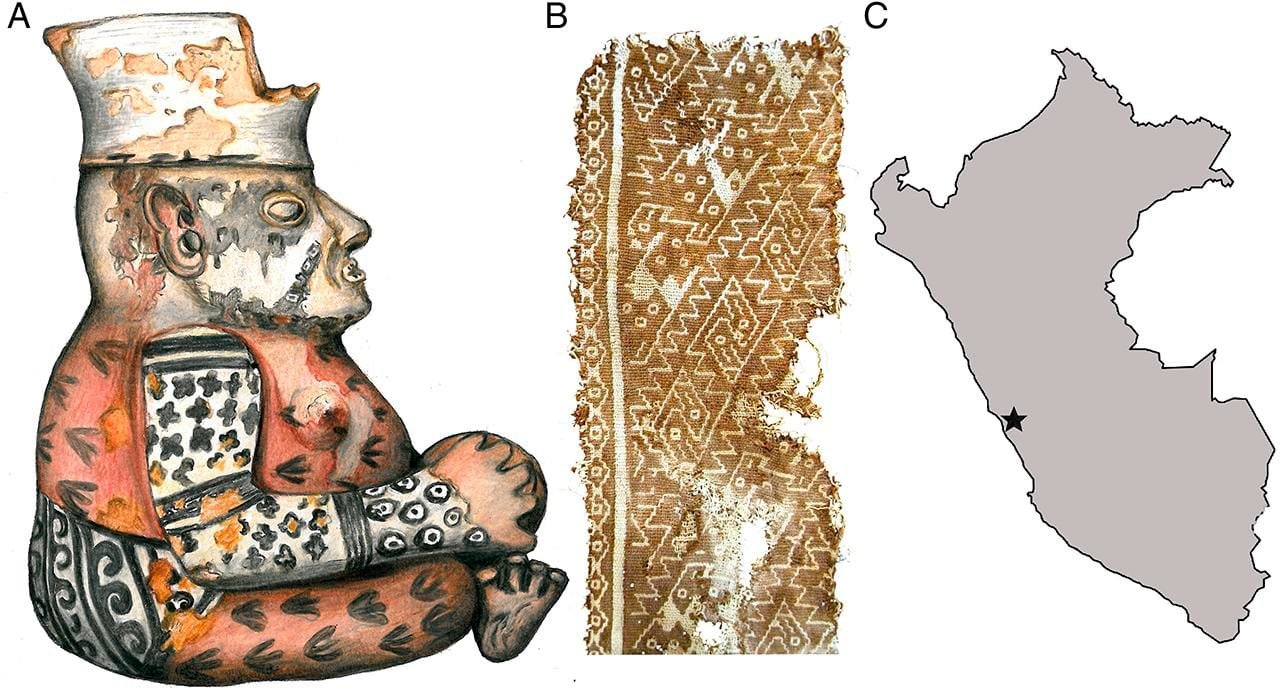In a breakthrough study published in the Proceedings of the National Academy of Sciences on January 13, researchers revealed elaborate tattoos on the mummified bodies of people from Peru’s Chancay culture, which flourished from 900 to 1470 CE. Using a new technique called laser-stimulated fluorescence ( LSF), the research team has brought fine details of body art into view, hidden under centuries of decay.
 Tattoos from the pre-Columbian Chancay culture of coastal Peru. Credit: Kaye et al., PNAS (2025)
Tattoos from the pre-Columbian Chancay culture of coastal Peru. Credit: Kaye et al., PNAS (2025)
The Chancay culture, known for its black-and-white ceramics and textiles, also practiced tattooing—a tradition recently discovered to be more complicated than previously thought.
“Our imaging work involved scanning a laser line back-and-forth over the mummified human remains in a dark room,” archaeologist Michael Pittman from the Chinese University of Hong Kong, a co-developer of the LSF technique, told Popular Science. “This phenomenon resulted in the skin emanating a glow, vividly illuminating the concealed intricacies of the original tattoos.”
The method allowed scientists to study tattoos on over 100 mummified people preserved at the Arturo Ruiz Estrada Archaeological Museum in Peru. Only a few individuals had tattoos of such great detail that included geometric designs, animal depictions, and vine-like patterns. The tattoo lines were as thin as 0.1–0.2 millimeters—thinner than what today’s tattoo needles can produce. The precision of these tattoos exceeds that seen in Chancay pottery or textiles.
 Art and location of the Chancay culture. Credit: Kaye et al., PNAS (2025)
Art and location of the Chancay culture. Credit: Kaye et al., PNAS (2025)
The Chancay culture occupied the coastal valleys of Peru before their incorporation into the Inca Empire. Their tattoos, which are now demonstrated to be comparable in complexity to their other artistic expressions, may have played significant social or spiritual roles.
“Tattoos might have been status symbols or spiritual emblems,” said Thomas Kaye of the Foundation for Scientific Advancement, who co-developed the LSF technique alongside Pittman.
The study sheds light on the artistic sophistication of the Chancay people and highlights the potential of LSF imaging for future research. “LSF has the potential to reveal milestones in human artistic development through the study of other ancient tattoos,” Pittman and colleagues wrote. The team plans to apply this method to mummies from other cultures, hoping to uncover new insights into the global history of tattooing.
More information: T.G. Kaye, J. Bąk, H.W. Marcelo, M. Pittman, (2025). Hidden artistic complexity of Peru’s Chancay culture discovered in tattoos by laser-stimulated fluorescence, Proc. Natl. Acad. Sci. U.S.A. 122 (4) e2421517122, doi:10.1073/pnas.2421517122





